







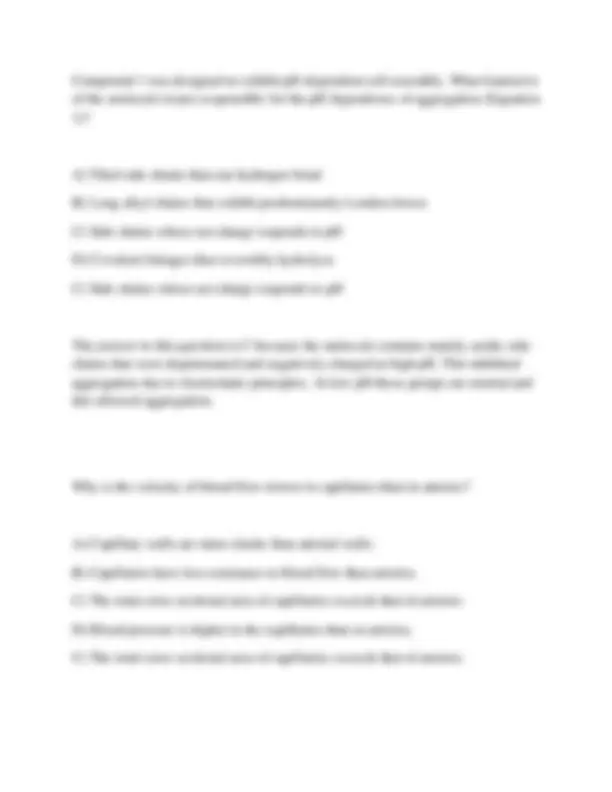
















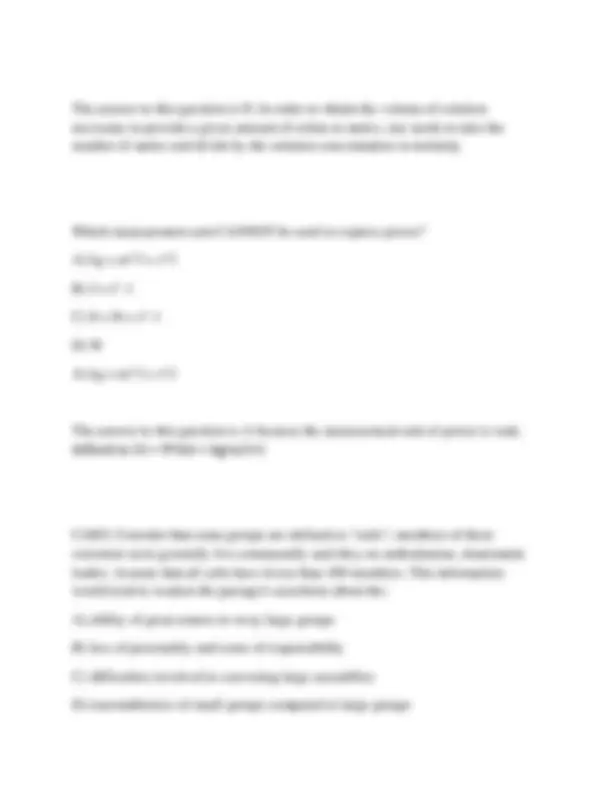
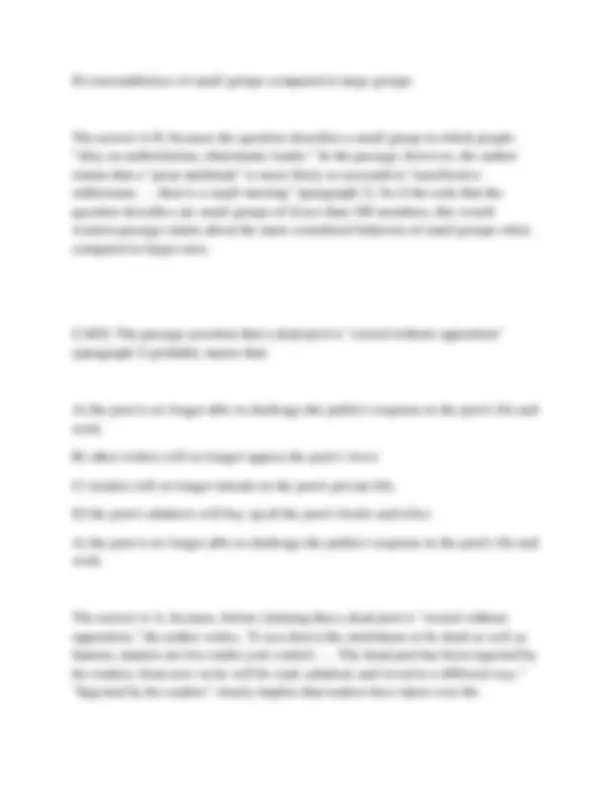
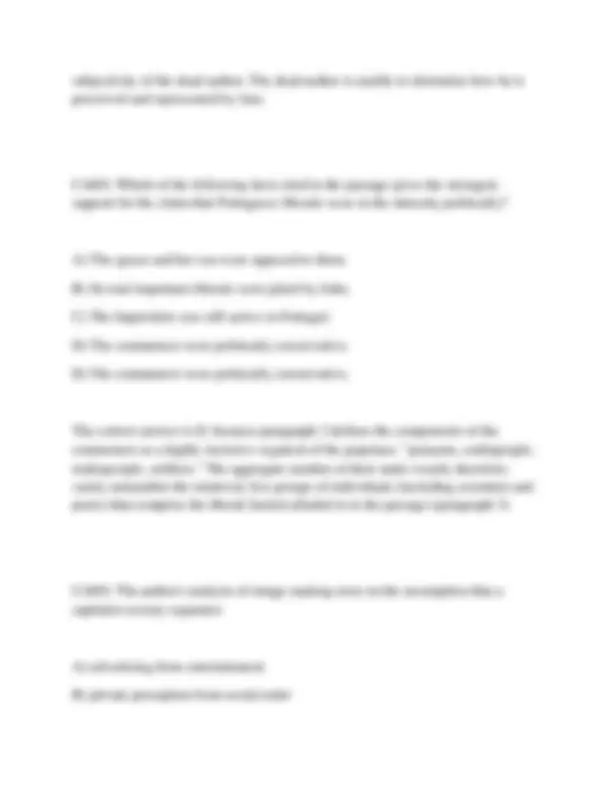


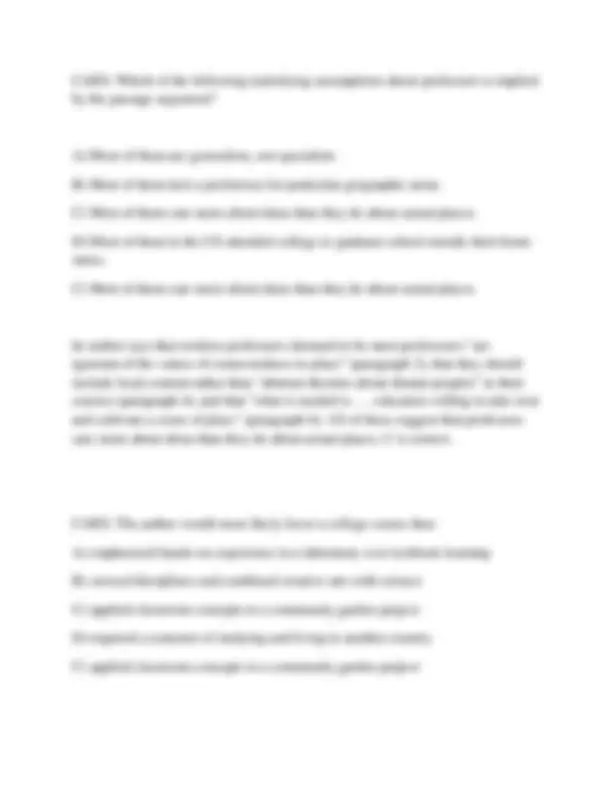
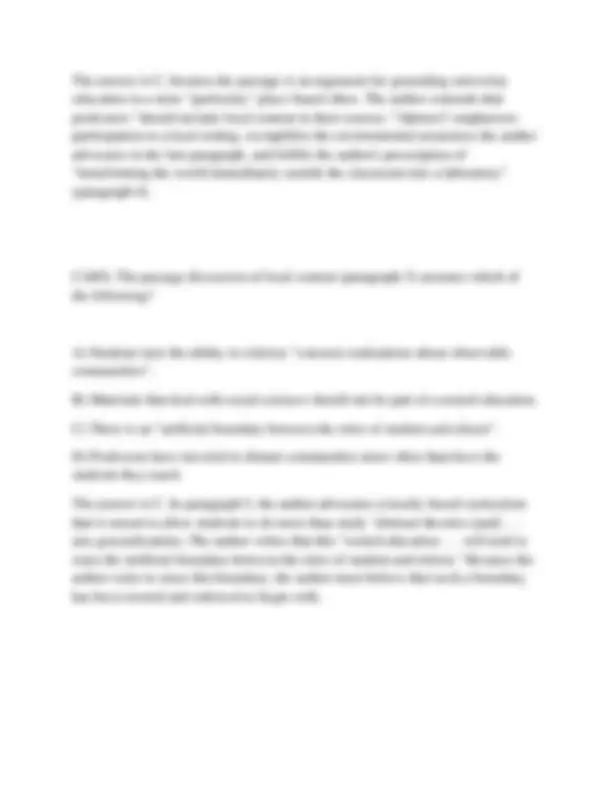

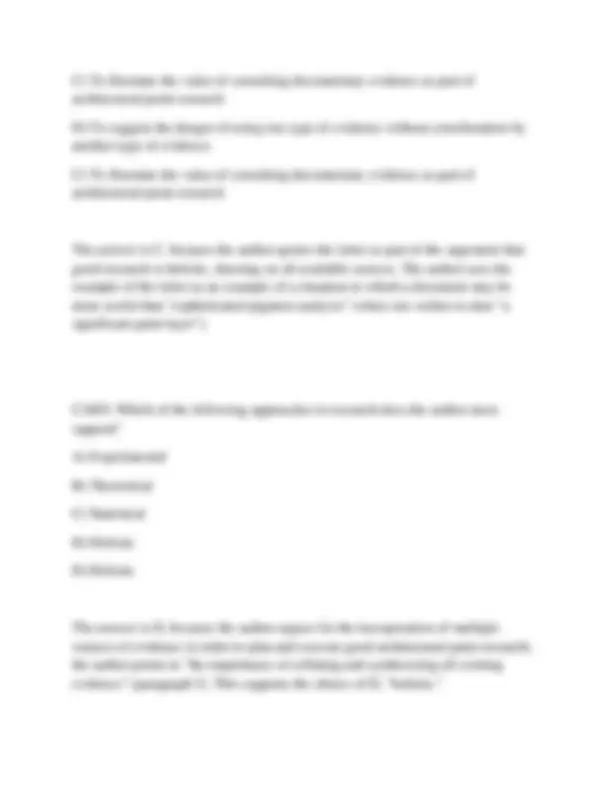
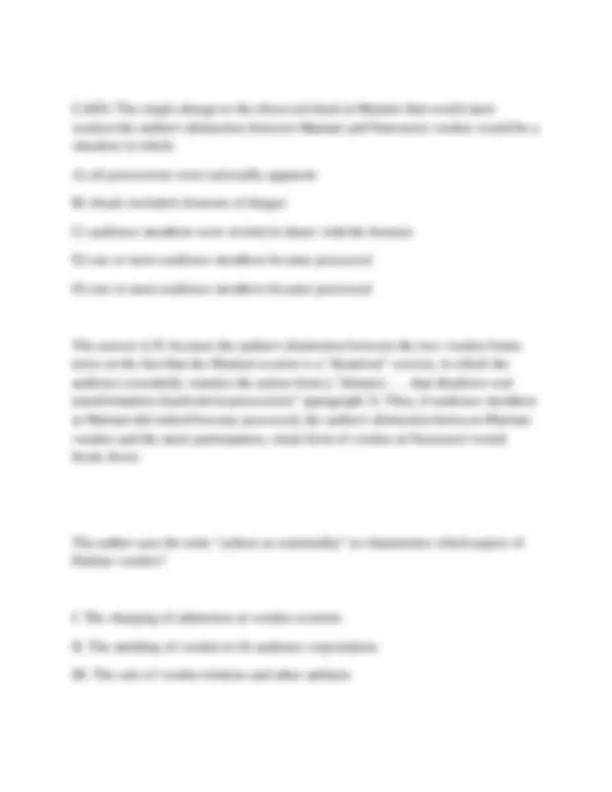
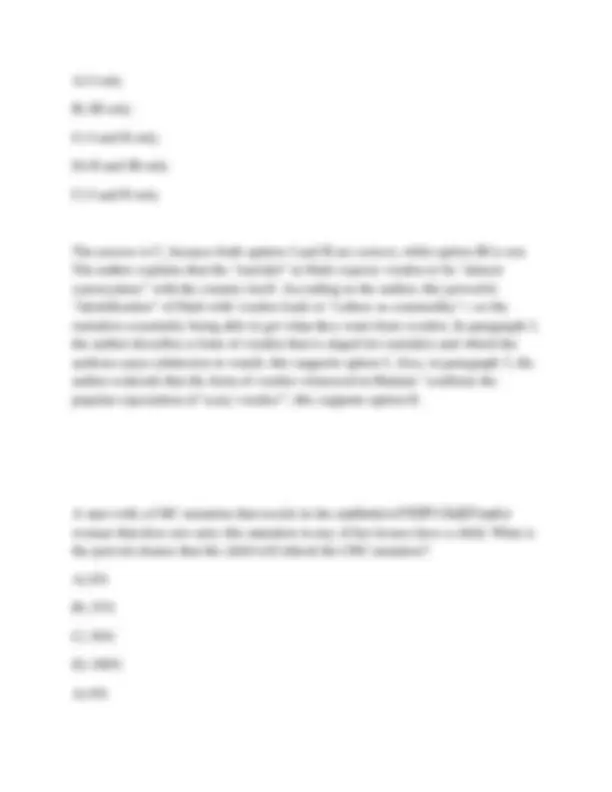
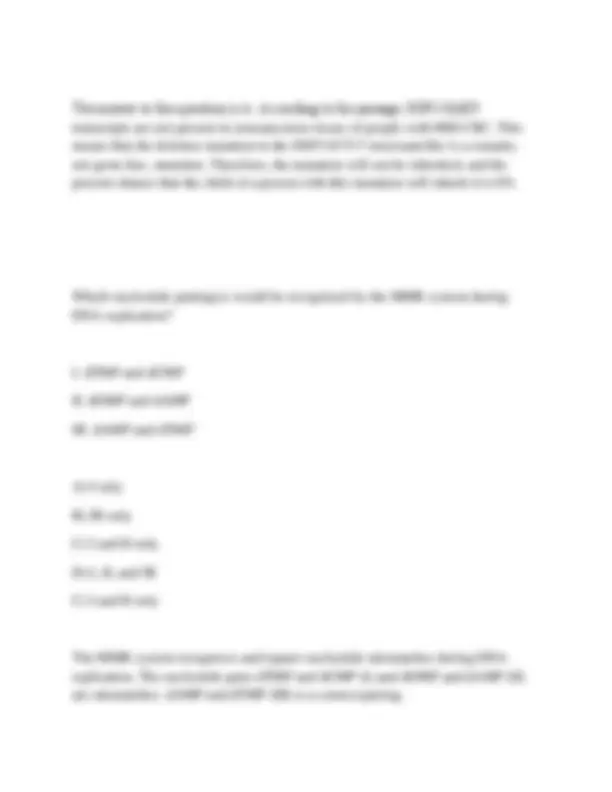
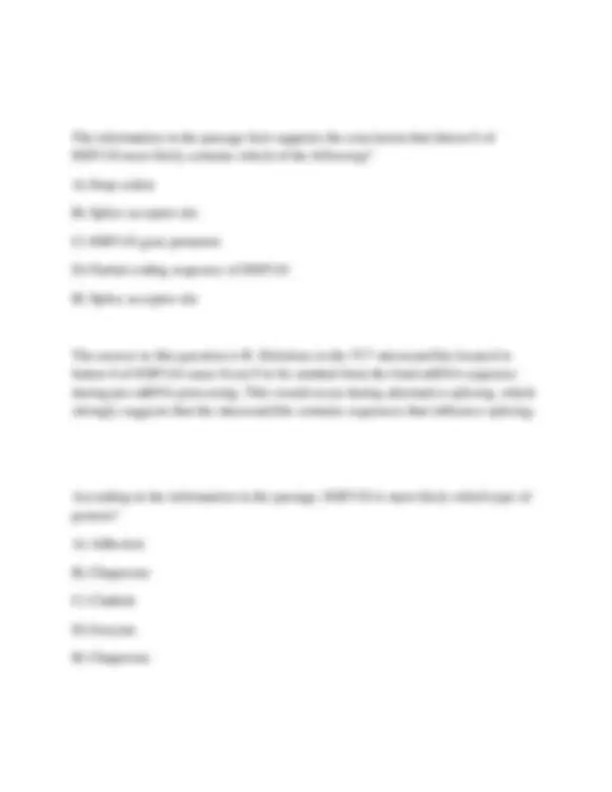




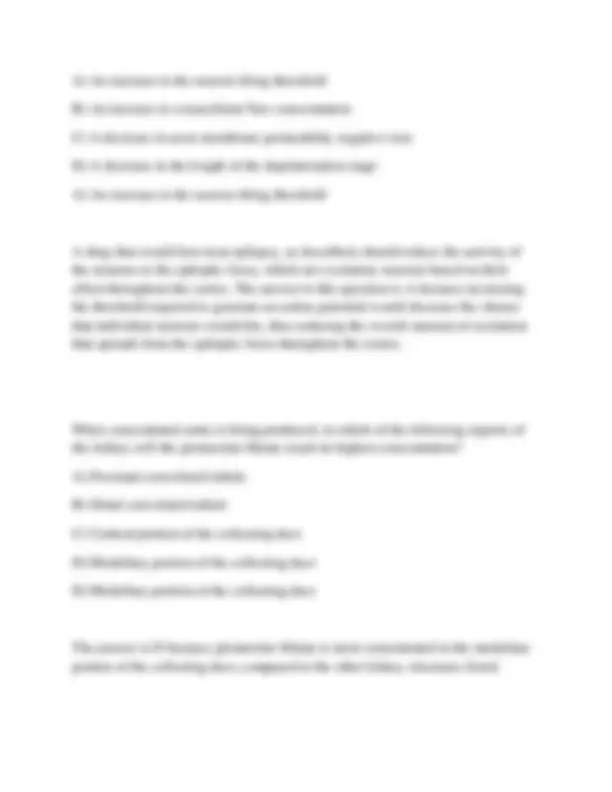

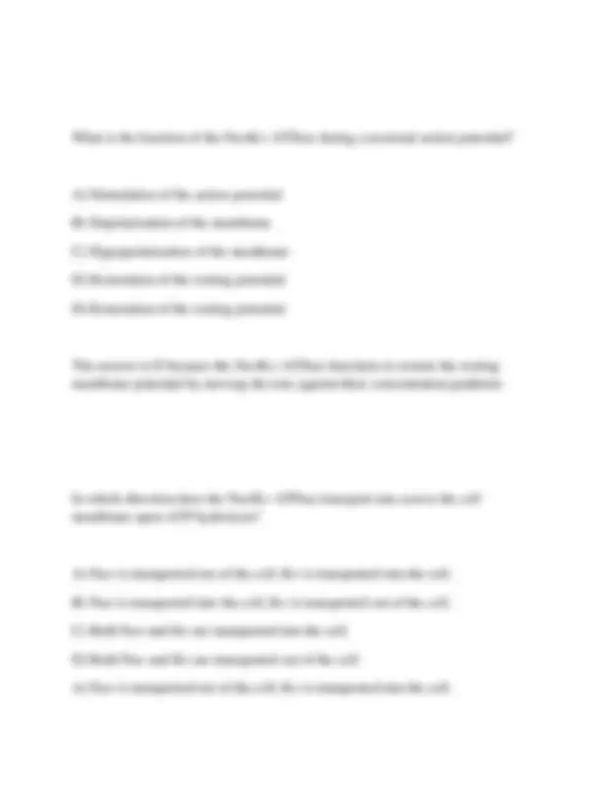

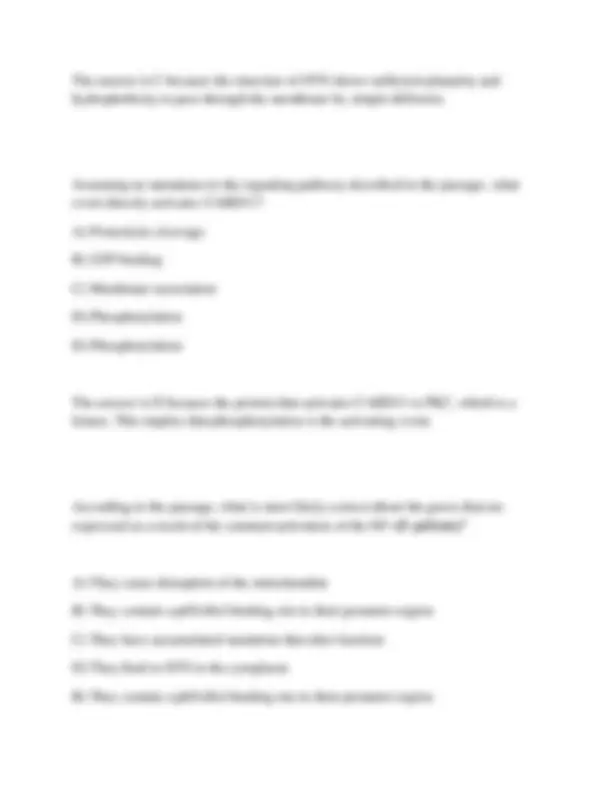
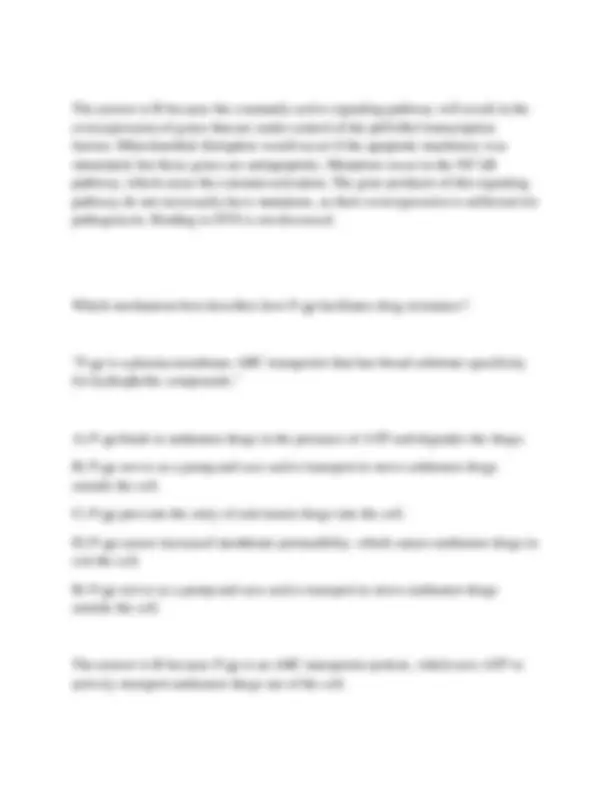
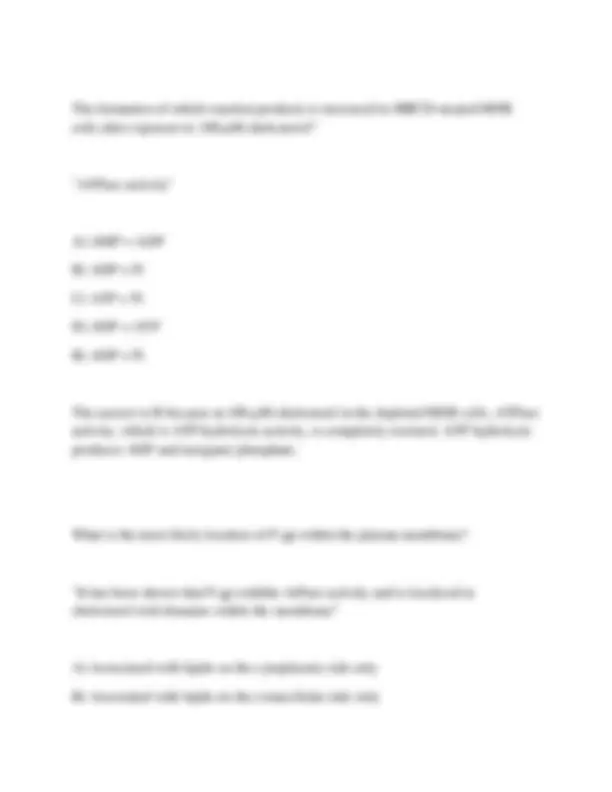

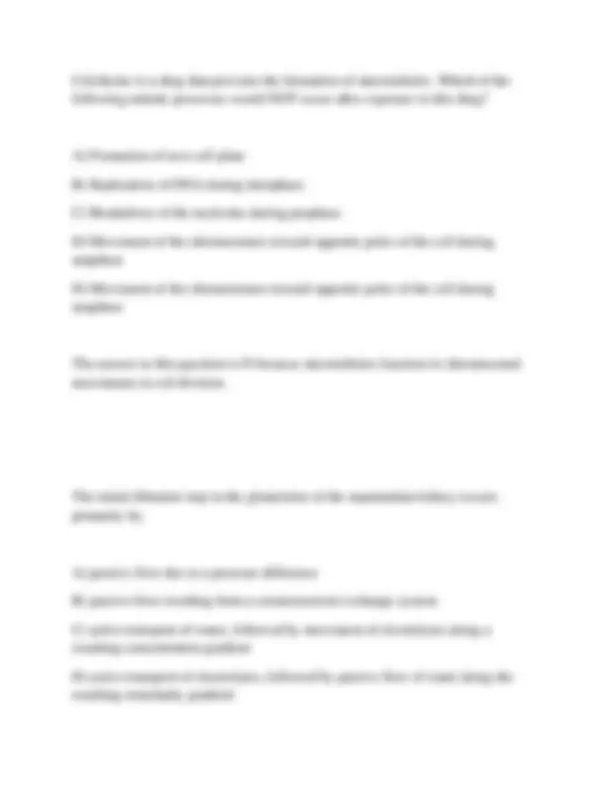
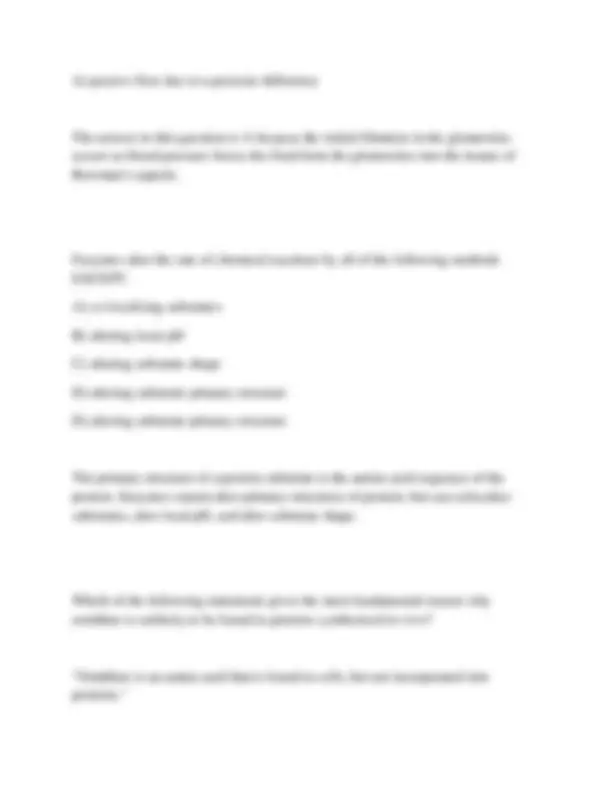

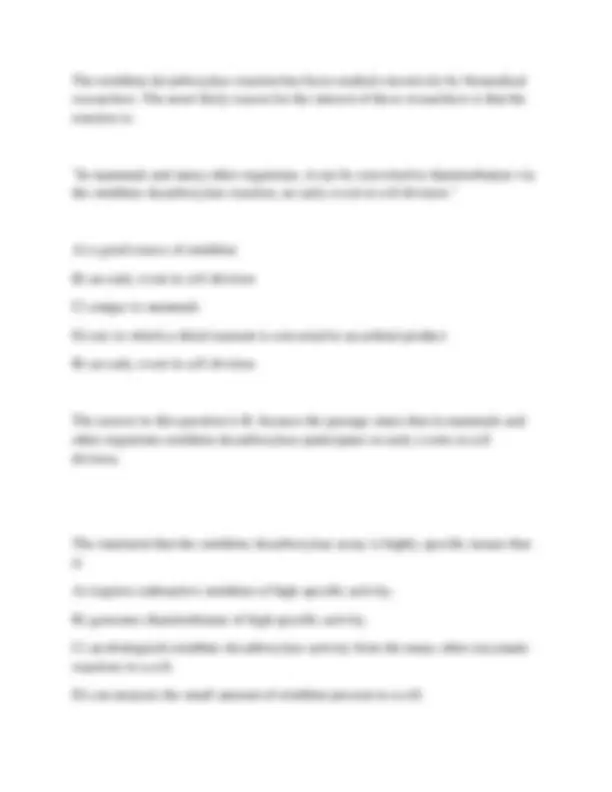
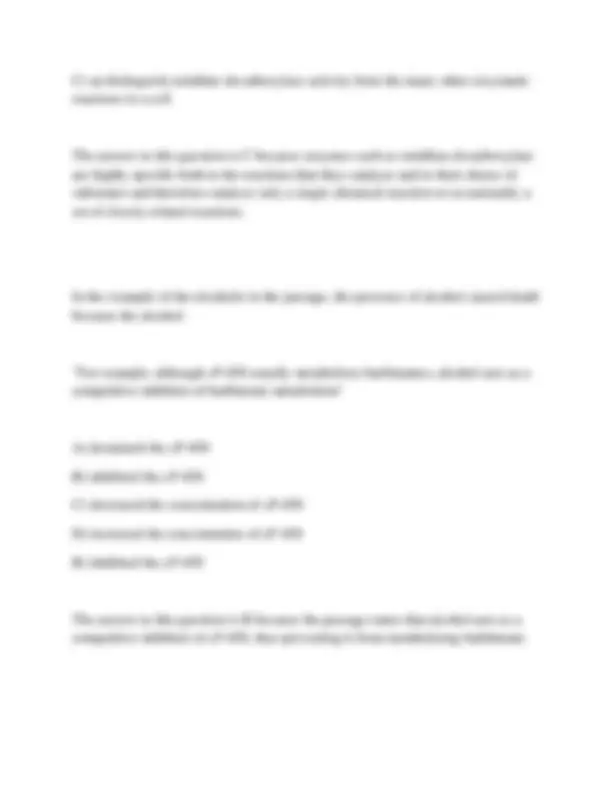
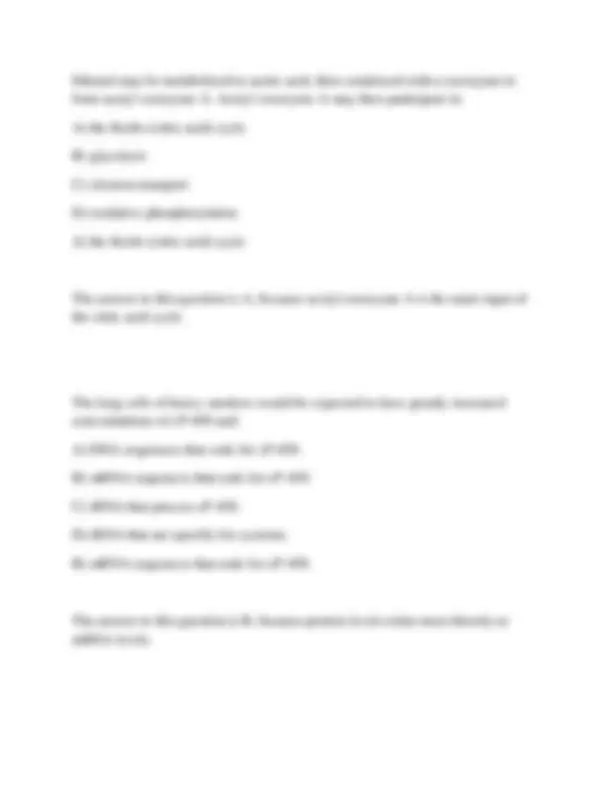

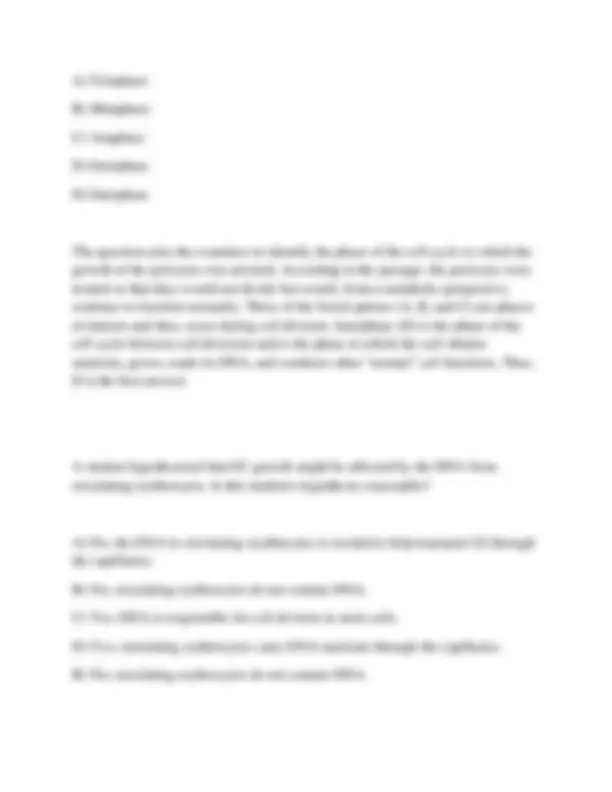
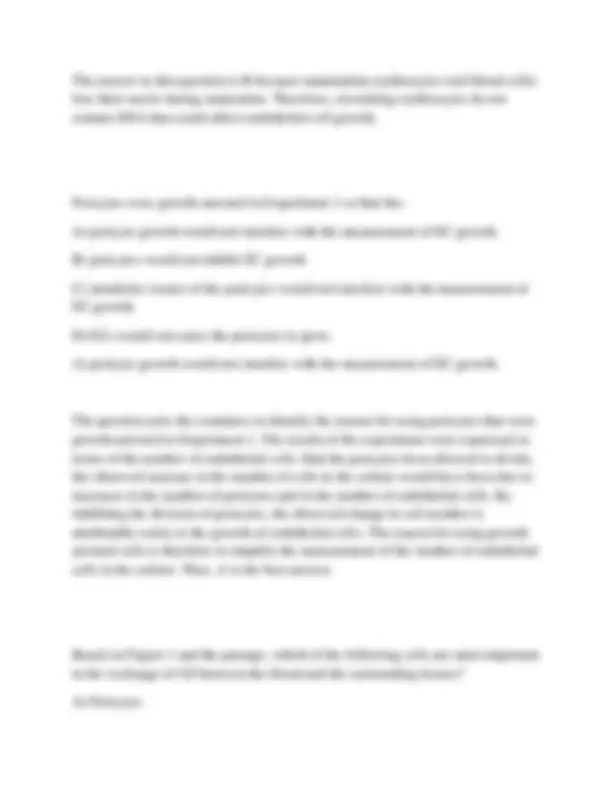
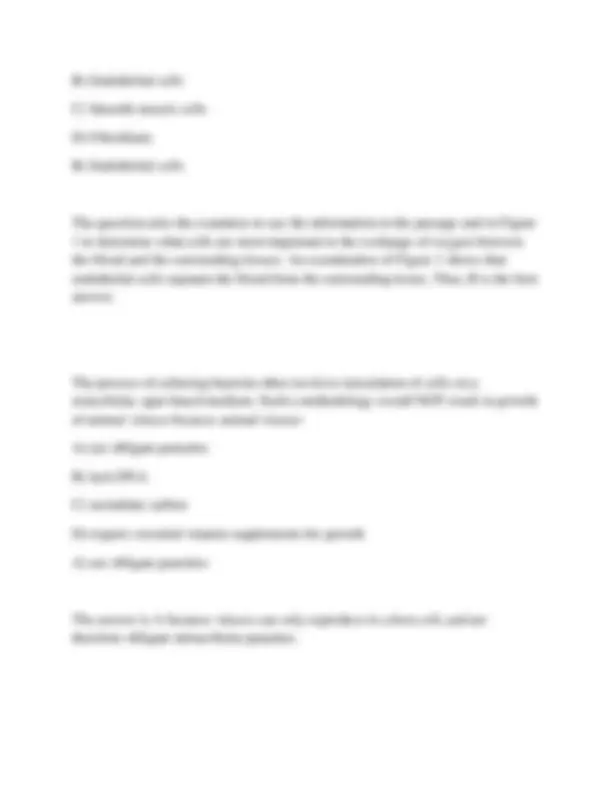
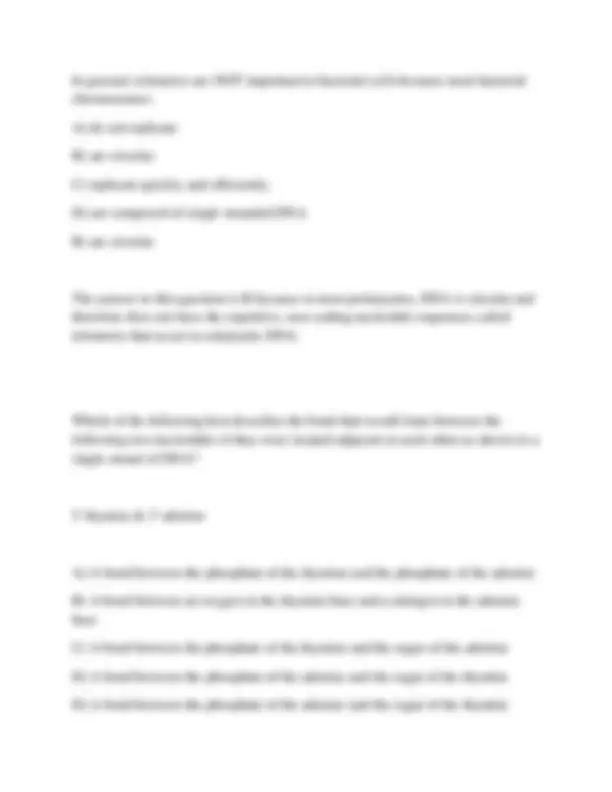
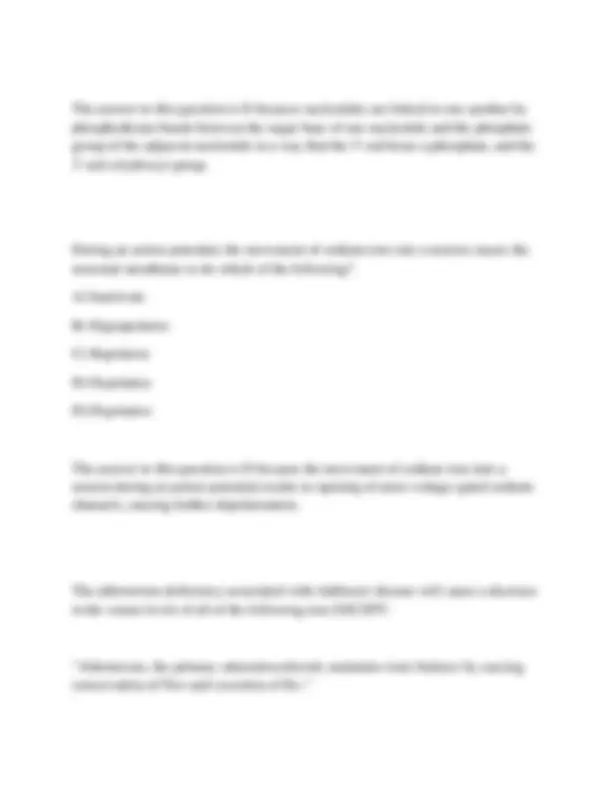
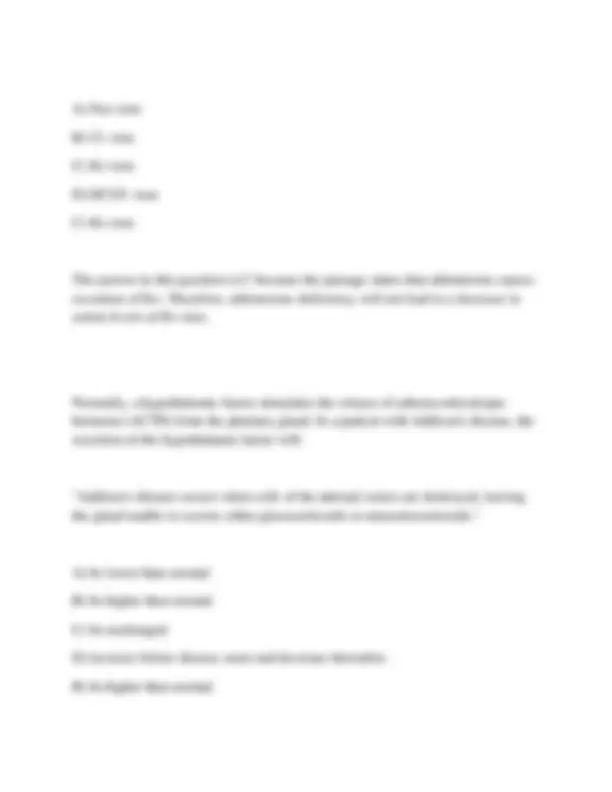
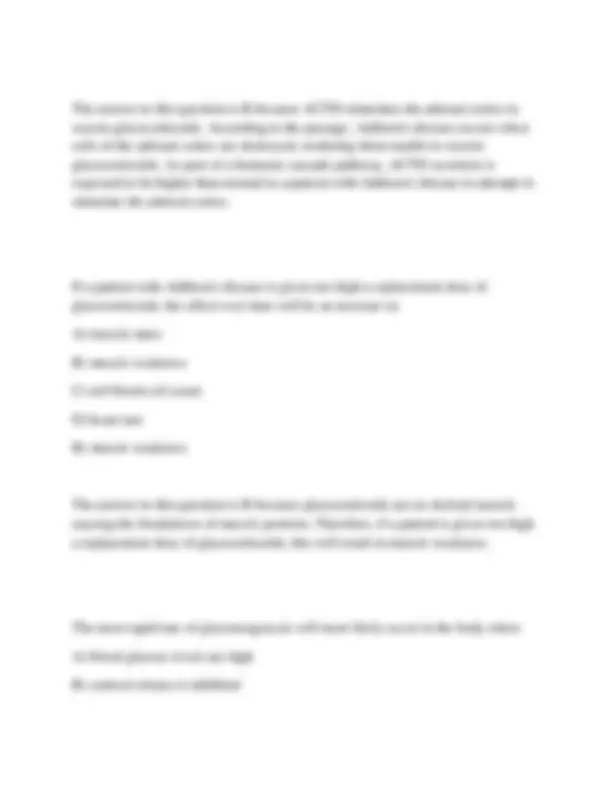

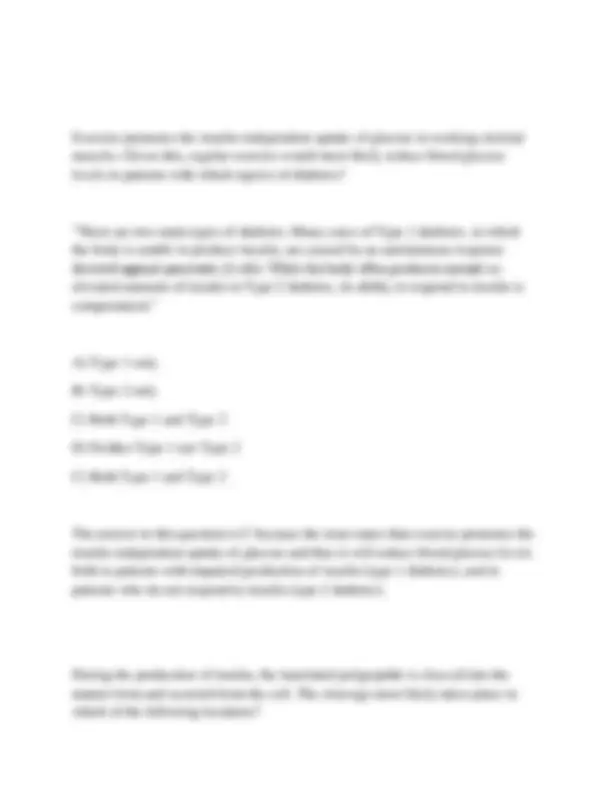
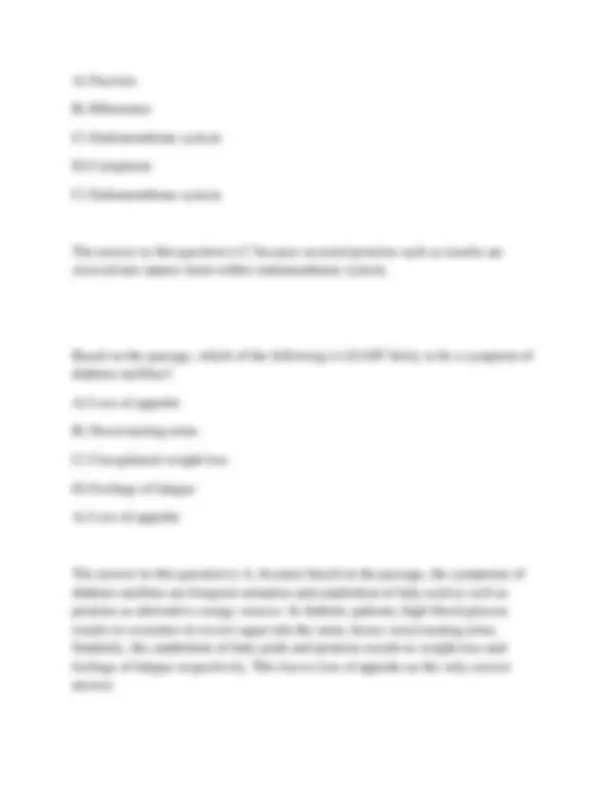
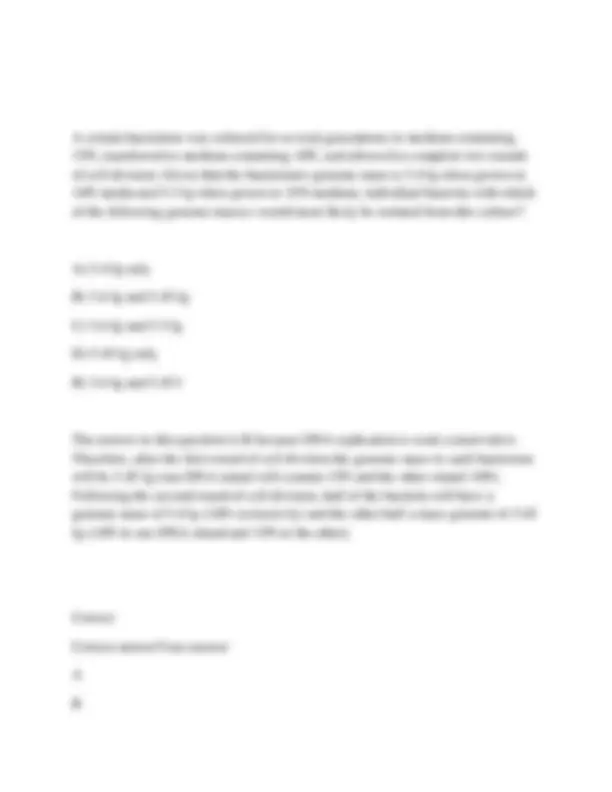

















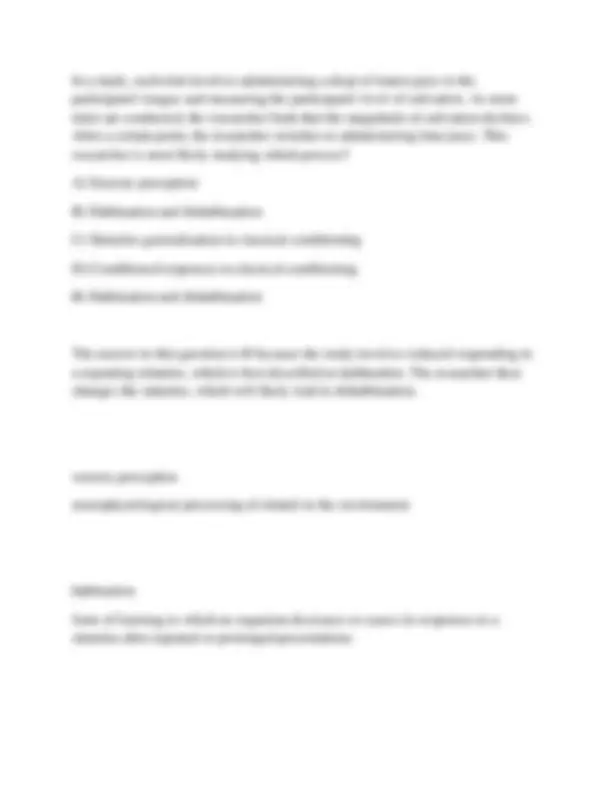






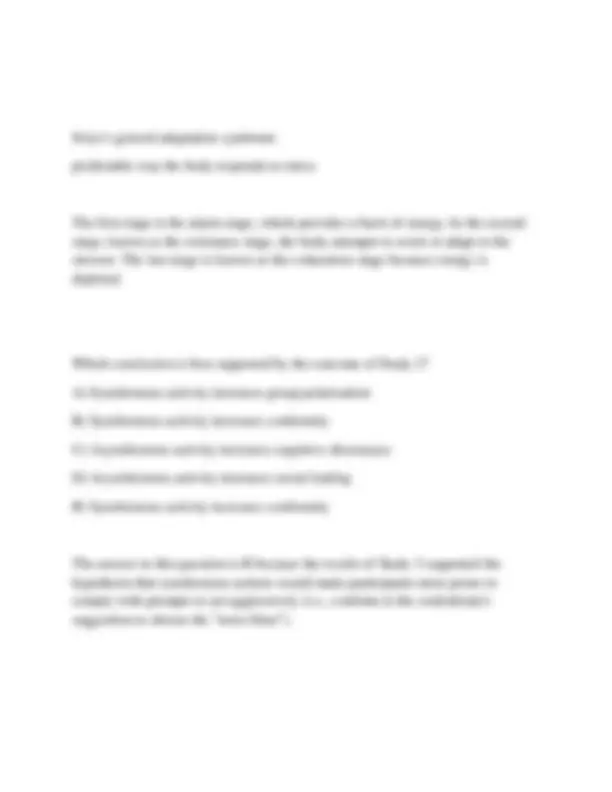


Study with the several resources on Docsity

Earn points by helping other students or get them with a premium plan


Prepare for your exams
Study with the several resources on Docsity

Earn points to download
Earn points by helping other students or get them with a premium plan
Community
Ask the community for help and clear up your study doubts
Discover the best universities in your country according to Docsity users
Free resources
Download our free guides on studying techniques, anxiety management strategies, and thesis advice from Docsity tutors
AAMC MCAT EXAM 1 2025-2026 QUESTIONS AND CORRECT ANSWERS WITH RATIONALE GRADED A+ GUARANTEED PASS
Typology: Exams
1 / 133

This page cannot be seen from the preview
Don't miss anything!





























































































In the chromatography of the reaction mixture, water absorbed on cellulose functioned as the stationary phase. What was the principal factor determining the migration of individual components in the sample?
A) Hydrogen bonding
B) Solute concentration
C) Stationary phase concentration
D) Thickness of paper
A) Hydrogen bonding
The answer to this question is A because the relative amount of hydrogen bonding to the stationary phase will determine the relative rate of migration of the various components in the sample.
What assumption is being made if scientists conclude that aspartic acid was formed by the prebiological synthesis in the passage?
A) Aspartic acid is unstable at temperatures below 150 degrees C.
B) All of the malic acid underwent the dehydration reaction to form fumaric/maleic acid.
C) Compound A and cyanide were available on primitive Earth.
D) The reaction between ammonia and fumaric acid was catalyzed by the presence of water.
C) Compound A and cyanide were available on primitive Earth.
he answer to this question is C since, in order for the experimental reaction sequence to be relevant to the primordial formation of aspartic acid, the starting materials used (Compound A and cyanide) are assumed to have been available.
According to the developed chromatography plate shown below, what is the approximate Rf value of aspartic acid?
aspartic acid = 2
solvent front = 10
B) An aldehyde group
C) An amide group
D) A carboxyl group
C) An amide group
The answer to this question is C because the functional group that forms during peptide bond formation is known as an amide group.
If 2-pentanol replaces 1-pentanol in the reaction shown in Figure 3 (SN2), the rate of substitution is less because:
A) the C-O bond in 2-pentanol is stronger than the C-O bond in 1-pentanol.
B) there is a competing elimination reaction that slows the rate of substitution.
C) there is more steric hindrance at the oxygen atom in 2-pentanol than in 1- pentanol, making protonation less likely.
D) there is more steric hindrance at the 2-position of 2-pentanol than at the 1- position of 1-pentanol.
D) there is more steric hindrance at the 2-position of 2-pentanol than at the 1- position of 1-pentanol.
The answer to this question is D because the rate of substitution of protonated alcohols is subject to steric hindrance. This inhibits the ability of nucleophiles to collide with the reacting electrophilic center and slows the rate of reaction.
If a solution containing the compounds shown in Figure 4, is injected into a gas- liquid chromatograph, the first peak observed in the gc trace is attributable to which compound?
A) Methyl-2-butanol
B) Methyl-2-butene
C) Chloro-2-methylbutane
D) Bromo-2-mehtylbutane
B) Methyl-2-butene
The answer to this question is B because 2-methyl-2-butene will exhibit the lowest molecular weight and also the weakest intermolecular forces of attraction. This substance will therefore migrate the fastest and be the first peak in the gas chromatograph (gc) trace.
R vs. S stereochemistry*
R = clockwise
C = counter-clockwise
Acetic acid and ethanol react to form an ester product as shown below.
In determining which reactant loses the -OH group, which of the following isotopic substitutions would be most useful?
The answer to this question is C because the strength of the eye lens is equal to the inverse of the focal length of the eye lens. Its numerical value is given by (1 m)- 1+(0.02 m)-1=1 D+50 D=51 D.
Which statement correctly describes how enzymes affect chemical reactions? Stabilization of:
A) the substrate changes the free energy of the reaction.
B) the transition state changes the free energy of the reaction.
C) the substrate changes the activation energy of the reaction.
D) the transition state changes the activation energy of the reaction.
D) the transition state changes the activation energy of the reaction.
The answer is D because the stabilization of the transition state, not the substrate, provides binding energy that is used to lower the activation energy.
Which of the following will decrease the percentage ionization of 1.0 M acetic acid, CH3CO2H(aq)?*
A) Chlorinating the CH3 group
B) Diluting the solution
C) Adding concentrated HCl (aq)
D) Adding a drop of basic indicator
C) Adding concentrated HCl (aq)
The answer to this question is C because HCl is a strong acid that will increase the amount of H+ in solution and thus decrease the percentage of CH3CO2H that ionizes.
When the current in the micro-robot's circuit increases and the resistance of the circuit remains constant, the voltage of the circuit:
A) decreases
B) increases
C) is constant
D) is zero
B) increases
The answer to this question is B because according to Ohm's law, current is equal to voltage divided by resistance. If current increases and resistance is constant, then voltage increases as well.
The answer to this question is D because the energy of electromagnetic radiation is directly proportional to the number of photons, and the intensity of electromagnetic radiation is defined as energy emitted per unit time. Thus, intensity is directly proportional to the number of photons emitted.
What is the energy of the photons emitted by the LED at a frequency of 610 THz? (Note: h = 6.6 × 10-34 J·s)
The answer to this question is D because the energy of a photon of frequency 610 THz is equal to 6.6 x 10-34 J•s x 610 x 1012 Hz = 4 x 10-19 J.
What percentage of standard atmospheric pressure is the pulse pressure of a healthy adult?
The maximum and minimum blood pressures of a healthy adult are about Ps = 120 mmHg and Pd = 75 mmHg.
Pp = Ps-Pd
The answer to this question is B because the pulse pressure in a healthy adult is (120 − 75) mmHg = 45 mmHg, and so the percentage is 45 mmHg/760 mmHg = 6%.
What fraction of a O-15 sample decays in 10 min?
"The location of internal organs where changes in the calcium content occur can be found by placing positron-emitting isotopes such as O-15 (with a half-life = 2 min) into the patient's bloodstream)
A) Arg and Gly
B) Cys and Gly
C) Cys and Asp
D) Asp and Arg
D) Asp and Arg
The answer to this question is D. The residues that were engineered into the peptide for cell adhesion are arginine and aspartate as can be reasoned based on the structure of the peptide provided, and the description of the roles of the various residues provided in the passage.
Which amino acid was incorporated into Compound 1 as a future site of covalent attachment to HA prior to mineralization?
A) Ser
B) Ala
C) Tyr
D) Thr
A) Ser
The answer to this question is A because serine is the residue that was phosphorylated, and phosphorylation enabled the protein to be subsequently attached to hydroxyapatite (HA).
Compound 1 was designed to exhibit pH-dependent self-assembly. What feature(s) of the molecule is(are) responsible for the pH dependence of aggregation (Equation 1)?
A) Thiol side chains that can hydrogen bond
B) Long alkyl chains that exhibit predominantly London forces
C) Side chains whose net charge responds to pH
D) Covalent linkages that reversibly hydrolyze
C) Side chains whose net charge responds to pH
The answer to this question is C because the molecule contains mainly acidic side chains that were deprotonated and negatively charged at high pH. This inhibited aggregation due to electrostatic principles. At low pH these groups are neutral and this allowed aggregation.
Why is the velocity of blood flow slower in capillaries than in arteries?
A) Capillary walls are more elastic than arterial walls.
B) Capillaries have less resistance to blood flow than arteries.
C) The total cross-sectional area of capillaries exceeds that of arteries.
D) Blood pressure is higher in the capillaries than in arteries.
C) The total cross-sectional area of capillaries exceeds that of arteries.
B) Intermolecular forces are infinitely large.
C) Individual molecular volume and intermolecular forces are negligible.
D) One gram-mole occupies a volume of 22.4 L at 25 degrees C and one atmosphere pressure.
C) Individual molecular volume and intermolecular forces are negligible.
The answer to this question is C since a property of an "ideal" gas is that it is composed of particles that have negligible volume and do not exert intermolecular forces.
The production of a variety of opsins functions to:
"Additional opsin based receptors are expressed in specialized cone cells"
A) increase sensitivity to low light
B) enable the detection of different colors
C) ensure fast recovery of 11-cis retinal after exposure
D) increase refractive index of the eye lens
B) enable the detection of different colors
The answer to this question is B. The wavelength of light absorbed by a molecule depends on its structure, and so the production of a variety of structurally related opsins functions to enable the detection of different colors.
The environment of the retinal binding site is most likely:
"Rhodopsin is composed of opsin, a family of seven helix transmembrane proteins, and a covalently attached coenzyme, retinal."
A) hydrophilic
B) positively charged
C) negatively charged
D) hydrophobic
D) hydrophobic
The answer to this question is D because retinal is composed of mainly carbon and hydrogen, making it largely hydrophobic.
The source of the phosphate groups that are added to rhodopsin is:
"Wild-type or variant rhodopsin was reconstituted with 11-cis-retinal and phosphorylated by rhodopsin kinase in the presence of ATP before examining arrestin binding"
A) arrestin
A) ATP hydrolysis
B) Peptide bond cleavage
C) Hydrolysis of triacylglycerides
D) Transfer of carboxyl groups
C) Hydrolysis of triacylglycerides
The answer is C because the fact that LipA is a lipase, which means it must hydrolyze fatty acids.
Compared to the wild-type LipA, what is the change in net charge in variant XI at pH 7?
The answer is D because the amino acid substitutions replace amino acids with charges of +1, +1, 0, 0, and 0 with ones that have charges of 0, −1, −1, 0, and 0 so the net charge goes from +2 to −2.
The data in Figure 1 show that:
A) the unfolding of LipA proteins is a non-reversible process.
B) exposure to high temperature eliminates any variant protein activity.
C) variation in the flexible regions of LipA decreases the temperature sensitivity of activity.
D) wild-type LipA loses all activity when first heated to 50°C.
C) variation in the flexible regions of LipA decreases the temperature sensitivity of activity.
The answer is C because the data show that variation of the flexible regions results in less temperature sensitivity of activity. Activity returns even when variants are exposed to high temperature.
By what factor is the proton concentration increased in the experiments shown in Figure 1B from those shown in Figure 1A?